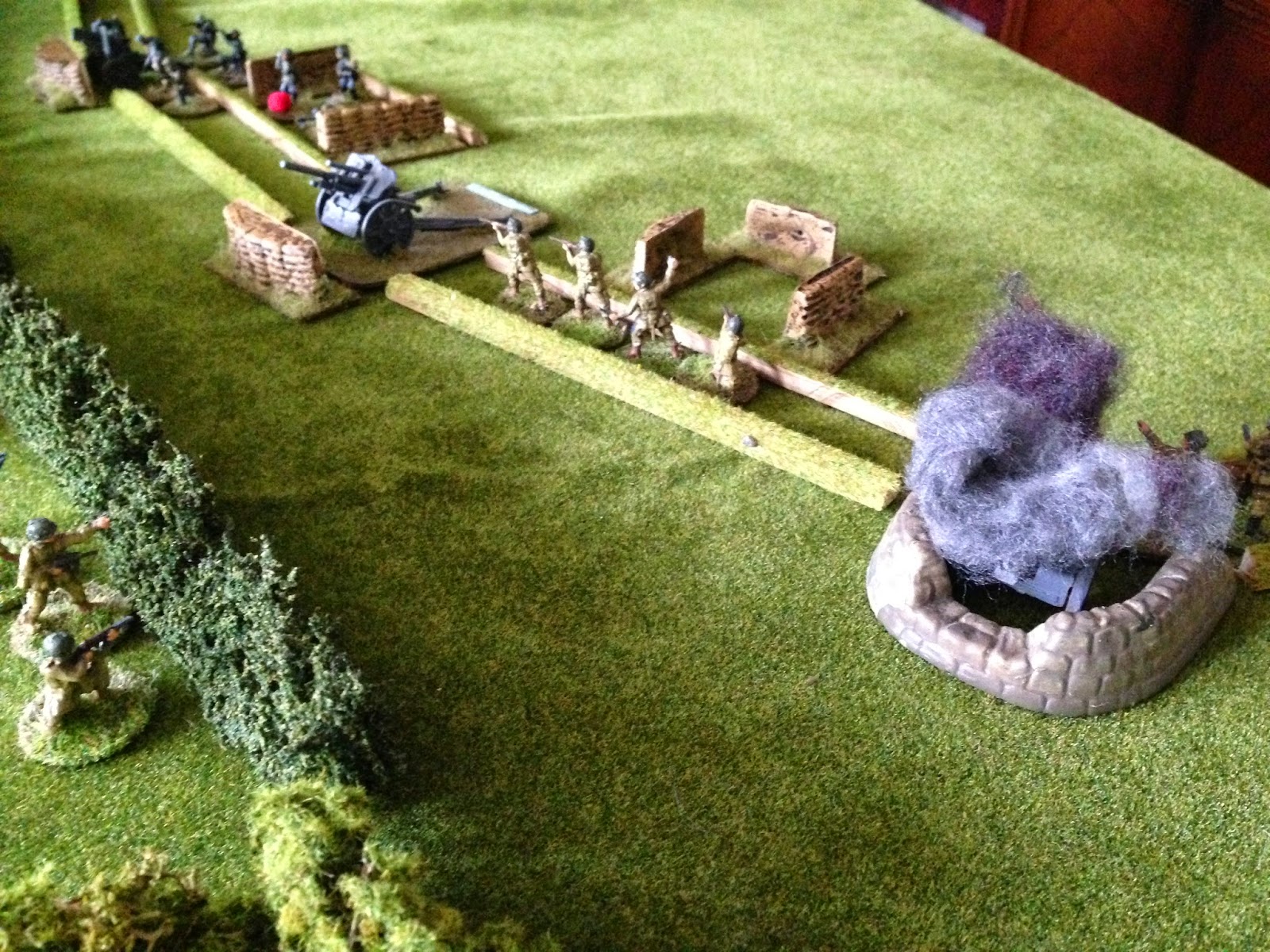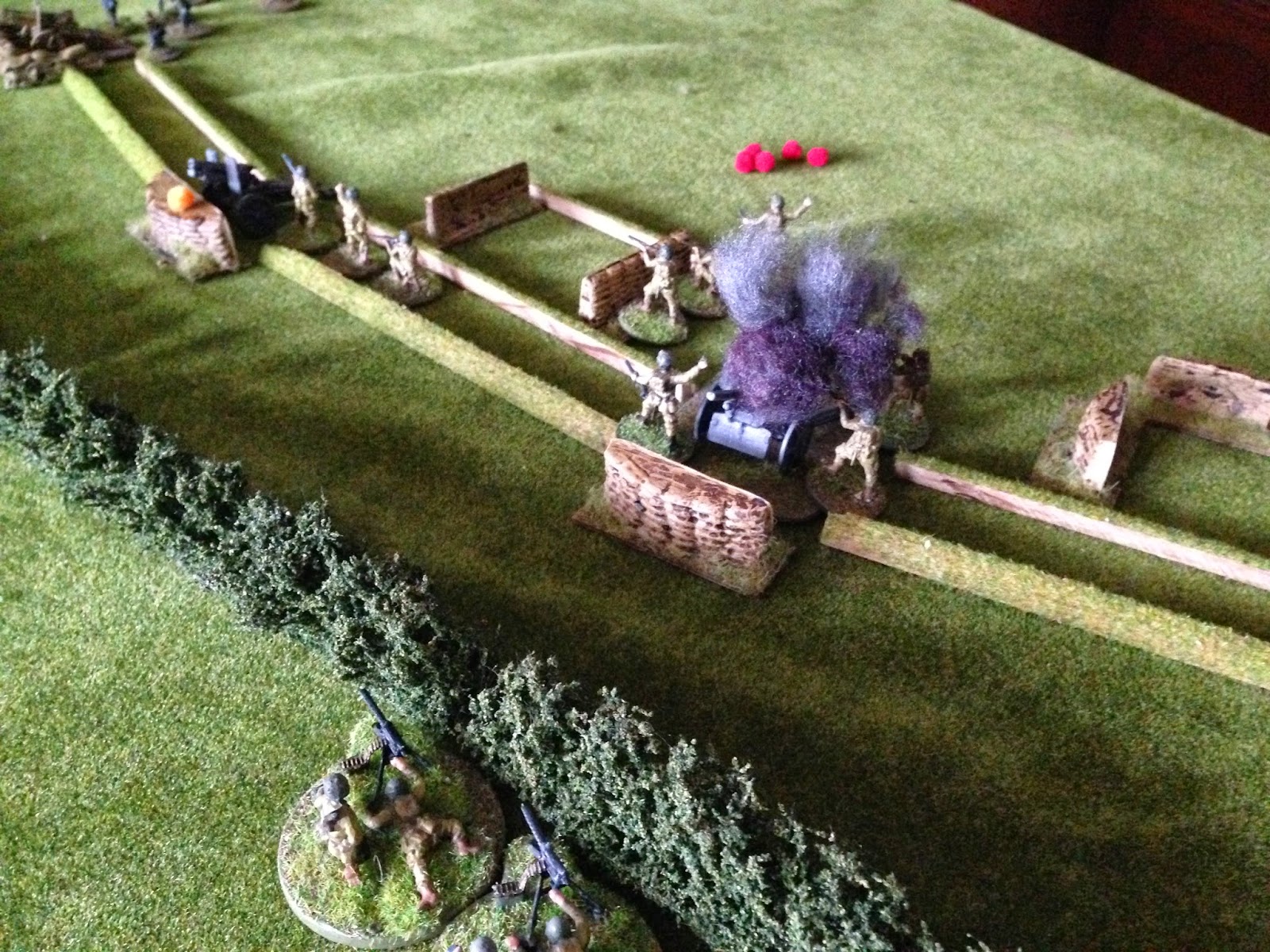One of the nicer elements of the rules is the action points system. Better commands get more points to do things with their various squad elements, while less effective platoons/companies are less useful as their points dry up quickly. You can move an element (twice) fire a number of times, or use multiple points for supporting fire etc.
The combat rules need a little work as they're quite clunky and table intensive, but these are a 'beta' after all.
We played the game again with FUBAR - another resounding success with a simple ruleset; fast flowing, intuitive, promoting crossfires and fire and movement to lend credence to the simplicity. Elegant and exciting are the watchwords here.
Anyway...to the pics!!!
My thanks to my work's car park for providing the basis for the stones used in the Falklands style 'natural rock' effect on the ground.(And yes, once again these are my ESCI 80s West Germans, painted as Israelis, representing Argentinian infantry today. Get the most out of your figures, I say ;).)
Right - this is where it gets messy. Flanking action in place - but who told the Argies they could advance from their trenches into the cover right in front of the British phaseline postion ;) ? Unexpected and bloomin' deadly mate!
We spent a while getting our head around the combat system, rolling one dice - rolling buckets of dice, trying every option and failing miserably to get to grips with how it's supposed to work - with one kill, a few suppressions, a scarper and brass piling up on the bloomin' moor.
We need a little more work on understanding the combat system, but the multiple actions on the basis of command effectiveness was really nice.
So - the attack recommenced with FUBAR.
A little advance on the British left, with accurate covering fire from the cover in the centre from B Section and the Scimitar.
...and another assault on the right. This one would be particularly bloody. It ain't easy chargin' bleedin' machine guns mate!
...and it never helps when the 'blahdy armour' fails its activation.
The Scimitar does come into its own eventually, accurately covering the desperate assaults against fixed Argentine positions.
There isn't much left as the Paras get into the Argentine position - defended now only by the remnants of the command element.
Oh...hits from the British command element end the need for an assault, before it even gets a chance to ready itself.
A really, really close game. FUBAR can be used in many games and is always fast and decisive.
The game did prompt me to start thinking about my own rules based on some of the excellent things we're seeing with action points and with FUBAR - at a company/regimental level for WWII and Modern...hmmm, thinking...thinking.
































